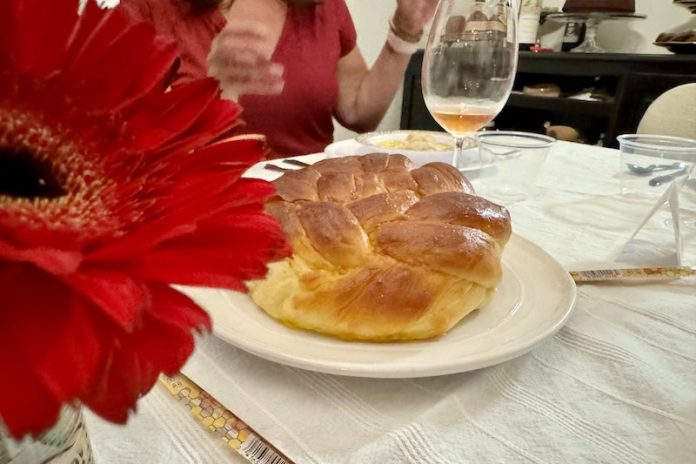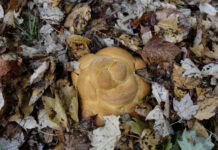Thanksgiving, Rosh Hashanah. The morning recital of “Modeh Ani.” These are times when I think of things I am grateful for. The list goes on and on: exceptional folk music, dancing, the way you feel when captivated by a really good book, the people who make you laugh, the teachers who answer all of your questions, a very beautiful day, and the beach. For me, there is an event that celebrates gratitude once a week, on Friday night. Every week, amidst all the chaos, I sit down to Shabbat dinner. No matter where I am in the world, or with whom, I observe the Sabbath’s rituals. I love this part of the week because it allows me to reflect on the long line of Jewish women I come from. When I hear the challah being cut, I think of those before me who crafted the quintessential recipe. When the warm bread touches my lips, I am connected to their stories. I look around the table to see the smiling faces of my family and friends, who maybe haven’t smiled that week.
Every week, my mom bakes fresh challah bread, which her mother, my Bubbe, taught her how to make. This week, I stepped in during the braiding process to split the dough into six pieces, three pieces per loaf. Each piece is squiggled down to replicate a very thick snake, which requires taking the piece and rubbing it in between my hands over and over, until the dough becomes uniform in thickness throughout. Then, three strands are pinched together at the top, and the braiding begins. Over, under, until the snakes are no longer individual pieces of dough but are interwoven into a thick loaf. The loaf is brushed with a golden egg yolk before being topped with sesame or za’atar. Once removed from the oven, the top of the bread resembles a piece of wood, light brown, with endless swirls marking the places gently brushed by the egg yolk.
After the blessings over the bread are made, the knife works its way through the fluffy bread, steam rising from the cut. When we eat the bread, our silence is broken, and we focus on the indulgences of the love and history we taste with each mouthful, remembering the interweaving of the past and present.
The intricate process of braiding dough reminds me of the traditions I value. I am drawn to the ritual of inviting in the Sabbath, as this simple ritual keeps my Jewish faith alive. In my family, challah tells a story of resilience and womanhood. So when the three snakes of dough come together on Friday evenings, so do the stories of my Ima, Bubbe, and female ancestors, whose acts of love kept Jewish traditions alive. And for that, I am grateful.
Join the conversation!





